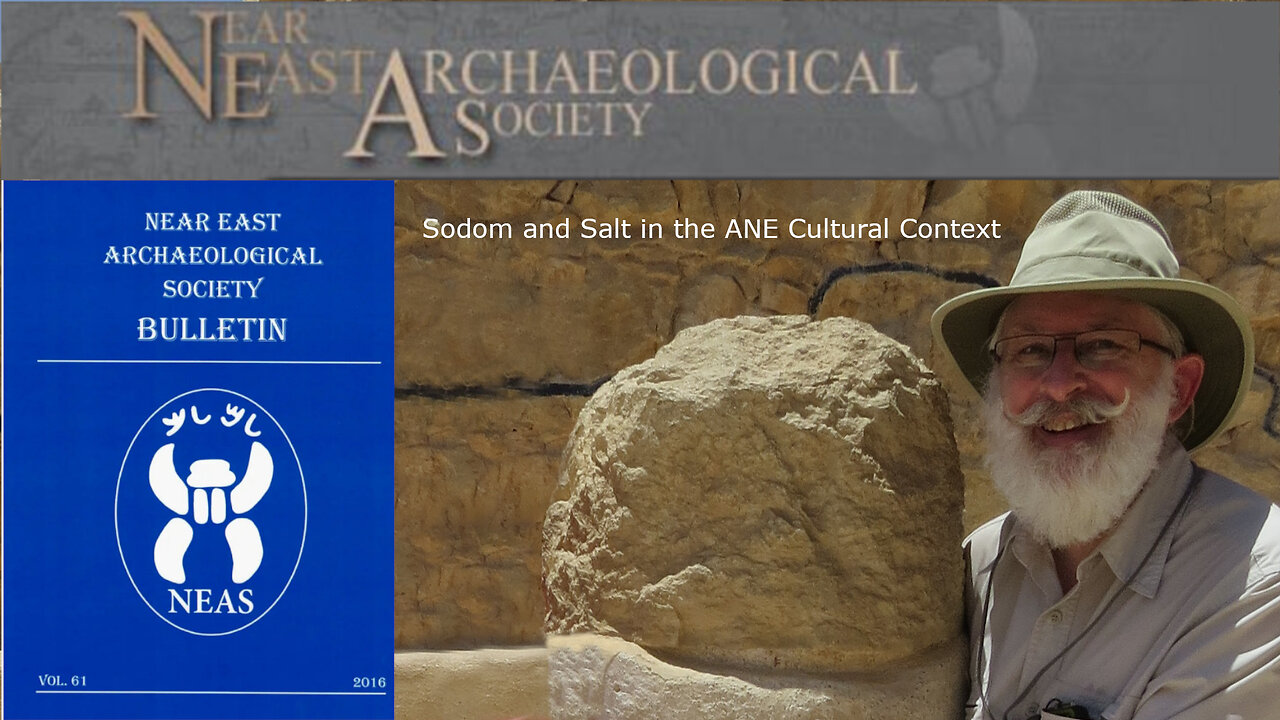Premium Only Content

006 Sodom And Salt in Their Ancient Near Eastern Cultural Context
Introduction to the article by Dr. David E. Graves, titled “Sodom And Salt in Their Ancient Near Eastern Cultural Context.” Near East Archaeological Society Bulletin 61 (2016): 18–36. In 1993, Flanagan, McCreery, and Yassine first coined the term 'Late Bronze Gap' to describe the 500-year period in which the Jordan Valley and Tall Nimrin went unoccupied between 1500 and 1000 B.C. Now, a potential explanation for this gap has been uncovered. Recent soil analysis of the region has revealed abnormally high levels of toxic salt and sulfate compounds in the destruction level above the Middle Bronze layer, making it impossible for settlers to repopulate the area. This discovery is consistent with the biblical narrative of Lot's wife being turned into a pillar of salt in Genesis 19:26. This is also in line with the ancient Near East custom of throwing salt on property that symbolized infertility and barrenness, and the practice of using salt to violate a covenant and its associated curse. Thus, the Late Bronze Gap can be explained by the catastrophic destruction of the Cities of the Plain, which affected the entire Jordan Valley and left it barren and infertile.
All our books are listed on our website smyrnaean.blogspot.com and can be found on Amazon.com
-
 3:20:22
3:20:22
Steven Crowder
6 hours agoCrowder Inauguration Day Live Stream 2025 | The Return of Donald Trump!
982K338 -
 LIVE
LIVE
Right Side Broadcasting Network
7 days ago🔴 LIVE: The Inauguration of Donald J. Trump as the 47th President of The United States 1/20/25
63,729 watching -
 LIVE
LIVE
Kimberly Guilfoyle
1 hour agoLive Inauguration Day Coverage
1,253 watching -
 3:54:12
3:54:12
vivafrei
5 hours agoTHE DON OF A NEW AMERICA! Trump Inauguration Live Stream! Viva Frei Live!
79.5K51 -
 3:42:54
3:42:54
The Quartering
1 day agoTrump Inauguration LIVE Broadcast & Commentary With DecoyVoice, Hannah Clare & Styxhexenhammer!
178K31 -
 LIVE
LIVE
LFA TV
1 day agoLIVE: INAUGURATION OF PRESIDENT DONALD J. TRUMP
3,766 watching -
 53:47
53:47
Russell Brand
5 hours agoInauguration Day Live! – SF522
158K57 -
 2:43:30
2:43:30
Donald Trump Jr.
6 hours agoFull Coverage of My Father’s Inauguration, America is Back. | TRIGGERED Ep.209
329K242 -
 1:49:47
1:49:47
Donald J. Trump
4 hours agoThe 60th Presidential Inauguration Ceremony
338K515 -
 DVR
DVR
GOP
14 hours agoThe 60th Presidential Inauguration Ceremony
133K39